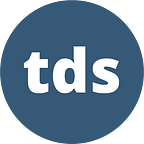Monthly Edition
May Edition: The Data of Urban Spaces
How data helps us make sense of cities
It’s sometimes hard not to think of cities as clusters of problems we need to solve: housing, food security, and environmental impact come to mind. Earlier this year we highlighted numerous ways in which data professionals are currently tackling these types of challenges by leveraging innovative approaches to climate and geospatial data.
Cities are much more than the sum of their pain points, of course: they reflect social values (the good, the bad, and the ambiguous), inspire creativity and connection, and function as living repositories of evolving cultures.
This month, we invite you to explore the richness and complexity of urban spaces. From bus wait times to the names of the streets we cross, the authors whose work we’ve selected apply their data skills to specific slivers of city life and allow us to gain a more nuanced understanding of how urban environments work.
Before we dive in, we wanted to thank you, as always, for all your support of the work we publish. For those of you who’d like to make a meaningful contribution, consider becoming Medium members; if you’re a student based in eligible countries, you can now sign up with a substantial discount.
TDS Editors Highlights
- Hidden Patterns in Street Names: a Data Science Story [Part 1] (January 2023, 6 minutes)
We rarely question who should get a street named after them, and who might be excluded in the process. Dea Bardhoshi’s fascinating data-analysis project is a helpful antidote to this common form of indifference: it looks into the gender distribution of street names in Tirana, Albania, and reveals many interesting findings along the way (some more predictable than others). - Housing Rental Market in Germany: Exploratory Data Analysis with Python (April 2023, 27 minutes)
As residents of many cities around the world face an ongoing housing crisis, it’s crucial to structure solution-oriented conversations around solid data. Dmitrii Eliuseev’s deep dive into Germany’s rental market offers a powerful roadmap for analysis that can serve renters and policymakers alike. - Mapping Black-Owned Businesses with GeoPy and Folium (January 2021, 5 minutes)
City dwellers from marginalized communities often deal with long histories of exclusion and segregation. Avonlea Fisher’s project aimed to address the outsized economic impact COVID-19 had on Black-owned businesses in Boston; two years on, it can still inspire data scientists to look for hyper-local answers to hyper-local issues. - Where Is the Bus? GTFS Will Tell Us! (January 2023, 15 minutes)
The basic premise behind Leo van der Meulen’s end-to-end tutorial is hard to refute: “Public transport and open data is a combination with tremendous potential.” It takes a nontrivial amount of work to translate a data firehose into a customer-facing interface telling riders when the next bus is coming, but the process is both interesting and potentially extensible to other contexts and places. - Digital Text Analysis: Street Poetry in the Dutch Language Area (November 2021, 5 minutes)
Geospatial data, textual analysis, and poetry come together in Emma-Sophia Nagels’s post, which traces the process of compiling, mapping, and analyzing publicly displayed poems in the Netherlands and the Dutch-speaking region of Belgium. - Finding Patterns in Convenience Store Locations with Geospatial Association Rule Mining (March 2023, 7 minutes)
Tokyo’s convenience stores are the stuff of legend: ubiquitous, accessible at all times, and full of some of the world’s best snacks. Elliot Humphrey goes beyond the surface and tries to detect patterns in stores’ locations in order to deduct the business strategy behind a phenomenon that can otherwise seem haphazard, if not downright chaotic.
Original Features
Explore our latest selection of resources and reading recommendations.
- New Frontiers in Audio Machine Learning
We curated a strong lineup of articles that cover the rise of new models, AI interfaces, and applications that have made working with audio and music exponentially more streamlined. - What Does Following “Best Practices” Mean, Anyway?
Our collection of standout posts around the topic of workflow optimization, from better plots to more effective experimentation.
Popular Posts
In case you missed them, here are some of last month’s most-read posts on TDS.
- Zero-ETL, ChatGPT, And The Future of Data Engineering by Barr Moses
- Time-Series Forecasting: Deep Learning vs Statistics — Who Wins? by Nikos Kafritsas
- 6 Python Best Practices that Distinguish Senior Developers from Juniors by Tomer Gabay
- How I Turned My Company’s Docs into a Searchable Database with OpenAI by Jacob Marks, Ph.D.
- 4 Autonomous AI Agents You Need to Know by Sophia Yang
- What’s New in Pandas 2.0? by Jeff Hale
We were thrilled to welcome a new cohort of TDS authors in March — they include Matt Collins, Krzysztof Pałczyński, Colin Horgan, Victor Graff, Dr. Roi Yehoshua, Mark Chen, Bernardo Furtado, Toon Beerten, Peng Qian, Edozie Onyearugbulem, Willem Koenders, Aaron Master and Doron Bergman, Lingjuan Lyu, Jacob Marks, Ph.D., Anthony Mensier, Francisco Caio Lima Paiva, Abhi Sawhney, Chris Mauck, Massimiliano Costacurta, Lee Vaughan, and Davide Caffagni, among others. If you have an interesting project or idea to share with us, we’d love to hear from you!
See you next month.
